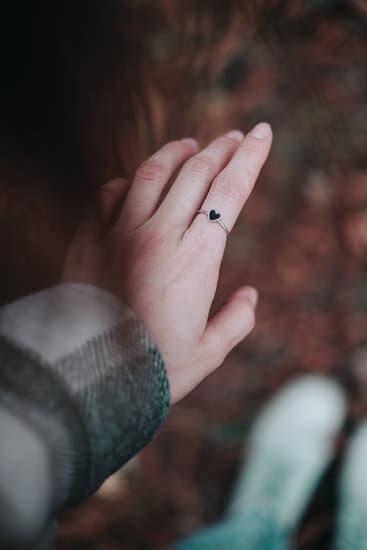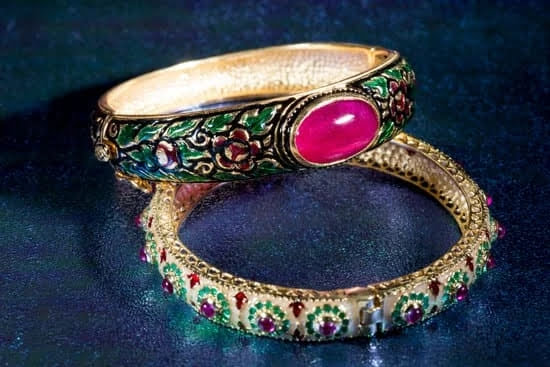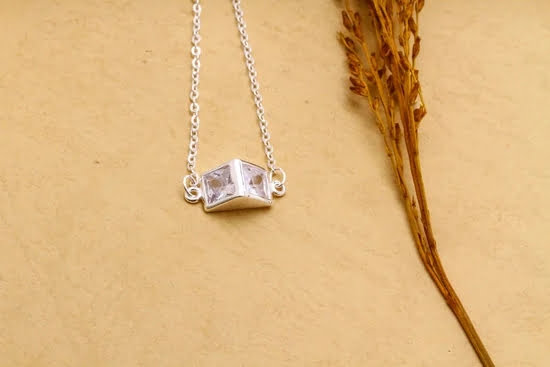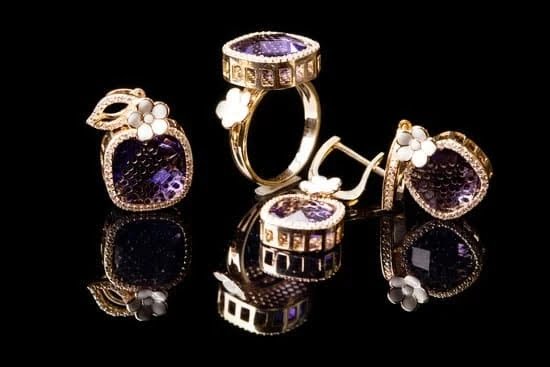Are you wondering how to identify fine jewelry? Fine jewelry is a valuable and cherished accessory that often holds sentimental and monetary value. In this article, we will explore the characteristics of fine jewelry, including the types of materials used, how to spot quality in gemstones, understanding hallmarks and authenticity, the importance of proper maintenance, and tips for buying fine jewelry.
Fine jewelry is typically made with high-quality materials such as diamonds, precious stones, and metals. These pieces are meticulously crafted by skilled artisans to ensure their durability and beauty. Whether it’s an engagement ring, a pair of earrings, or a bracelet, fine jewelry is known for its timeless elegance and exquisite craftsmanship.
To identify fine jewelry accurately, it’s essential to understand what sets it apart from other accessories. This includes recognizing the types of materials used in its construction, knowing how to distinguish high-quality gemstones, being familiar with hallmarks and authenticity markers, and learning about proper maintenance techniques. By gaining insight into these key aspects of fine jewelry, you can make informed decisions when purchasing or evaluating pieces for their value and quality.
What Makes Jewelry Fine
Fine jewelry is distinguished by its high-quality materials, superior craftsmanship, and exquisite design. When it comes to identifying fine jewelry, it’s essential to understand the key elements that contribute to its value and beauty.
High-Quality Materials
One of the primary factors that determine whether jewelry is considered “fine” is the use of high-quality materials. Fine jewelry is typically crafted from precious metals such as gold, platinum, or silver. These metals are often stamped with a hallmark to indicate their purity and authenticity. In addition to precious metals, fine jewelry may also feature genuine gemstones such as diamonds, sapphires, rubies, and emeralds.
Superior Craftsmanship
Another characteristic of fine jewelry is the level of skill and expertise that goes into its creation. Fine jewelry is often handcrafted by skilled artisans who pay meticulous attention to detail. This results in pieces that are not only beautiful but also durable and long-lasting. The setting of gemstones, the symmetry of designs, and the overall finish of the piece are all indicators of superior craftsmanship in fine jewelry.
Exquisite Design
In addition to high-quality materials and craftsmanship, fine jewelry is defined by its exquisite design. Whether it’s a classic diamond solitaire ring or a unique handmade necklace, fine jewelry showcases creativity, innovation, and attention to current fashion trends. The design of a piece can greatly impact its value and desirability among collectors and enthusiasts.
As you learn how to identify fine jewelry, understanding these key attributes – high-quality materials, superior craftsmanship, and exquisite design – will help you distinguish between ordinary pieces and those that are truly exceptional. Recognizing these qualities will allow you to make informed decisions when purchasing or evaluating fine jewelry for yourself or others.
Types of Fine Jewelry (Diamonds, Precious Stones, Metals)
Fine jewelry comes in many forms, each with its own unique characteristics and qualities. Understanding the different types of fine jewelry can help you to better identify the value and authenticity of these pieces. Here are some of the most common types of fine jewelry:
- Diamonds: Diamonds are one of the most sought-after gemstones in fine jewelry. When identifying fine diamond jewelry, look for attributes such as the 4Cs (cut, color, clarity, and carat weight) to determine its quality and value.
- Precious Stones: Alongside diamonds, other precious stones such as rubies, sapphires, and emeralds are also popular in fine jewelry. These colorful gemstones should be vibrant in color, free from blemishes or inclusions, and carefully set within the piece.
- Metals: Fine jewelry is often crafted using precious metals such as gold, silver, platinum, or palladium. These metals should be marked with purity stamps or hallmarks indicating their quality and authenticity.
Identifying fine jewelry is not only about recognizing the types of materials used but also understanding their quality.
How to Identify Fine Jewelry
When it comes to identifying fine jewelry, it’s essential to educate yourself on what makes a piece valuable and authentic. Understanding the craftsmanship and materials used can help you distinguish between genuine fine jewelry and imitations or lower-quality pieces.
Here are a few tips on how to identify fine jewelry:
- Look for reputable jewelers or brands known for their high-quality pieces.
- Educate yourself on the characteristics of specific gemstones such as color, clarity, and cut.
- Examine the metal purity marks or hallmarks on the piece to verify its authenticity.
By familiarizing yourself with these key indicators of quality, you can make more informed decisions when it comes to purchasing or evaluating fine jewelry.
Properly identifying fine jewelry involves knowing what to look for when it comes to quality materials and craftsmanship. By understanding the different types of fine jewelry – including diamonds, precious stones, and metals – along with how to spot quality in gemstones and checking for authenticity through hallmarks, consumers can feel more confident in their purchases.
How to Spot Quality in Gemstones
Quality is key when it comes to identifying fine jewelry, especially when it comes to gemstones. Genuine gemstones are highly valued for their brilliance, color, and rarity. The quality of a gemstone can greatly affect the value of the piece of jewelry in which it is set. Understanding how to spot quality in gemstones is crucial for anyone looking to invest in fine jewelry pieces.
One important factor to consider when assessing the quality of a gemstone is its color. The most valuable gemstones have vivid and intense colors that are evenly distributed throughout the stone. For example, in colored diamonds, the intensity and uniformity of the color play a significant role in determining its value. Dull or uneven colors can indicate lower quality and thus diminish the overall value of the jewelry piece.
Another aspect to pay attention to when evaluating gemstone quality is its clarity. High-quality gemstones are generally free from any visible imperfections or blemishes, both on the surface and inside the stone. Gemstones with fewer flaws are considered more valuable due to their rarity and superior visual appeal.
In addition to color and clarity, another indicator of quality in gemstones is their cut. A well-cut gemstone reflects light evenly within the stone, resulting in enhanced brilliance and sparkle. Properly proportioned cuts ensure that the stone’s natural beauty is maximized, making it more desirable and valuable. When buying fine jewelry, understanding these factors will help you identify high-quality gemstones from lesser ones.
| Factor | Description |
|---|---|
| Color | The vividness and uniformity of color affect a gemstone’s quality |
| Clarity | Gemstones without visible flaws are considered higher quality |
| Cut | A well-cut gemstone enhances brilliance and visual appeal |
Understanding Hallmarks and Authenticity
When it comes to identifying fine jewelry, understanding hallmarks and authenticity is crucial. These marks are like a fingerprint of the jewelry, providing important information about its quality, origin, and materials used. Here are some key points to consider:
- Look for a hallmark: A hallmark is a mark or series of marks stamped on jewelry to indicate its purity or authenticity. It can be in the form of numbers, letters, symbols, or a combination of these. Common hallmarks include the manufacturer’s mark, metal purity mark, and country of origin mark.
- Evaluate the quality: The presence of a hallmark doesn’t always guarantee authenticity. It’s important to research and familiarize yourself with different hallmarks used in fine jewelry. For example, in the United States, you may come across hallmarks such as “14K” for 14 karat gold or “925” for sterling silver.
- Consider professional authentication: If you’re unsure about the authenticity of a piece of fine jewelry, it’s recommended to seek the expertise of a professional appraiser or jeweler who can examine the item thoroughly and provide you with an appraisal report.
Understanding hallmarks and authenticity is essential when it comes to identifying fine jewelry. These marks not only provide valuable information about a piece but also help ensure that you’re getting genuine and high-quality jewelry.
Remember to always look for a hallmark on any piece of jewelry you’re considering purchasing – this will give you insight into its composition and quality. Additionally, don’t hesitate to seek out professional assistance if you have any doubts about the authenticity of a particular piece. By being informed about hallmarks and authenticity, you can make more confident decisions when buying fine jewelry.
The Importance of Proper Jewelry Maintenance
Proper maintenance of fine jewelry is essential to preserve its beauty and value. Fine jewelry, such as diamonds, precious stones, and high-quality metals, requires regular care to ensure it retains its brilliance and luster. This section will discuss the importance of proper jewelry maintenance and provide helpful tips on how to keep your fine jewelry in top condition.
Fine jewelry, especially pieces with gemstones, can accumulate dirt, oils, and other residues from everyday wear. Regular cleaning of your jewelry is crucial to prevent these substances from dulling the appearance of your precious pieces. Additionally, professional cleaning and polishing can help restore the shine and sparkle of your jewelry.
In addition to cleaning, proper storage is critical for maintaining the quality of fine jewelry. Storing your pieces in a safe, dry place away from direct sunlight can prevent damage and discoloration. It is also recommended to store each piece separately to avoid scratches and tangles.
Overall, understanding how to identify fine jewelry is imperative for anyone looking to invest in or care for valuable pieces. Knowing what distinguishes fine jewelry from costume or fashion pieces ensures that you acquire authentic and high-quality items that will last a lifetime. Whether you are purchasing fine jewelry for yourself or as a gift for someone else, being able to spot quality gemstones and metals will help you make informed decisions about your purchases.
Tips for Buying Fine Jewelry
When it comes to purchasing fine jewelry, there are several important factors to consider in order to ensure that you are making a wise investment. One of the most crucial aspects of buying fine jewelry is understanding how to distinguish high-quality pieces from lower-quality ones. This can be done by paying careful attention to details such as the materials used, craftsmanship, and authenticity.
First and foremost, it’s essential to conduct thorough research on the different types of fine jewelry and their respective characteristics. Whether you’re interested in diamonds, precious stones, or metals, familiarizing yourself with the specific qualities and values of these materials will enable you to make informed decisions when shopping for fine jewelry.
Another key point to keep in mind when purchasing fine jewelry is the significance of hallmarks and authenticity. Genuine fine jewelry is often marked with a stamp that indicates its purity and quality. Understanding these hallmarks and other indicators of authenticity will help you identify reputable vendors and avoid counterfeit or low-quality pieces.
Furthermore, seeking guidance from trustworthy experts or professional jewelers can provide valuable insights into identifying fine jewelry. These professionals can offer personalized advice on how to assess the quality and value of different pieces, as well as assist you in finding unique or custom-made jewelry that meets your preferences and budget.
By leveraging their expertise, you can make well-informed purchases and build a collection of fine jewelry that reflects your personal style and taste while retaining its value over time.
Conclusion
In conclusion, identifying fine jewelry requires a combination of knowledge and careful observation. Understanding the characteristics that make jewelry fine, such as the quality of gemstones and precious metals, is crucial in determining its authenticity and value. By familiarizing oneself with hallmarks and certification marks, one can further ensure the authenticity of the piece. Additionally, knowing how to properly maintain and care for fine jewelry is essential to preserving its beauty and value over time.
When it comes to purchasing fine jewelry, it’s important to buy from reputable sources and dealers who can provide certifications of authenticity. Even if you’re not an expert, being aware of common signs of quality in gemstones and metals can help you make informed decisions when making a purchase. Look for factors such as the 4Cs – cut, color, clarity, and carat weight in diamonds – or inspect the setting and craftsmanship of the piece.
Ultimately, having a good understanding of what makes jewelry fine will empower you to make educated choices when it comes to buying or selling such pieces. Whether for personal enjoyment or investment purposes, knowing how to identify fine jewelry will ensure that you are getting what you pay for – a beautiful adornment or valuable asset that meets the standards of excellence in craftsmanship and materials.
Frequently Asked Questions
How Can You Tell if Jewelry Is Fine?
You can tell if jewelry is fine by looking for specific markings on the piece. Fine jewelry is often stamped with a marking that indicates the type and purity of the metal used, such as 24K for pure gold, 925 for sterling silver, or PT950 for platinum.
Additionally, fine jewelry may also feature genuine gemstones and have intricate designs or craftsmanship.
What Are the Characteristics of Fine Jewelry?
The characteristics of fine jewelry include high-quality materials such as precious metals like gold, silver, and platinum. Fine jewelry also often features genuine gemstones like diamonds, rubies, sapphires, and emeralds. The craftsmanship of fine jewelry is typically of a superior standard, with attention to detail and intricate designs that set it apart from fashion or costume jewelry.
How Do I Know What Kind of Jewelry I Have?
To know what kind of jewelry you have, you can start by examining any markings on the piece. Look for stamps or engravings that indicate the metal purity (such as 18K or 14K for gold), as well as any maker’s marks that could help identify the origin or brand of the piece.
Additionally, consider getting an appraisal from a professional jeweler who can assess the quality and value of your jewelry based on its materials and design.

Welcome to my jewelry blog! My name is Sarah and I am the owner of this blog.
I love making jewelry and sharing my creations with others.
So whether you’re someone who loves wearing jewelry yourself or simply enjoys learning about it, be sure to check out my blog for insightful posts on everything related to this exciting topic!





